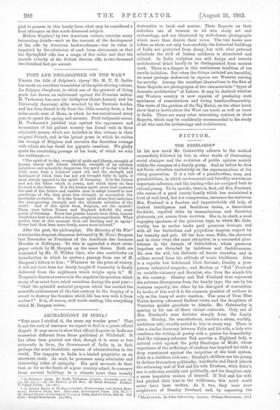ARCHAEOLOGY IN INDIA.t "THE more I studied it, the more
my wonder grew." That is not the sort of sentence we expect to find in a grave official Report. It may serve to show that. official Reports in India are somewhat. different from those published at Whitehall. It has often been pointed out that, though it is more or less autocratic in form, the Government of India is, in fact, perhaps the most Socialistic system of administration in the world. The taxpayer in. India is a landed proprietor on an enormous scale. As such, he possesses many admirable and interesting relics of antiquity. His paid servants do their best, so far as the funds of a poor country admit, to conserve these ancient buildings in a climate more than usually • (1) Belgium's Agony. By Ninth) Vorlusron. London: Constable and Co.. Lcs. ed. net.]—(2) The Meaning of the War. By Henri Bergson. London; T. Fisher Unwin. [le. net.] t (1) Annual Report of the Superintendent, Muhammadan and British Monu- ments, Northern Circle, 1014, Alinhabad: Government Bross. [lb. 8d.j- (2) Annuat Rsport, Arehaeologicat !Survey of India, Eg.itern Oink, 19,43-14. Cal.
• eutta Bengal Beeretariat. 1,18.10d.]
destructive to brick and mortar. Their Reports on their activities are of interest to all who study art and archaeology, and are illustrated by well-chosen photographs which more than double their value. The two books now before us show, not only how carefully the historical buildings of India are protected from decay, but with what paternal solicitude the skill of Indian artificers is stimulated and utilized. In India sculptors can still design and execute architectural detail hardly to be distinguished from ancient work. There is a danger in this continuous tradition of too servile imitation. But when the things imitated are beautiful, we must perhaps endeavour to repress our Western craving for novelty. Among the excellent illustrations to the first of these Reports are photographs of two characteristic " types of domestic architecture" at Lahore. It may be doubted whether any Western country is now capable. of producing suck specimens of conscientious and loving hanclicraftsmanship. The views of the gardens of the Taj. Mahal, on the other hand, show that in horticulture the West can teach as well as learn in India. There are many other interesting matters in these Reports, whioh may he confidently recommended to the study of all who care for archaeology and architecture.


































 Previous page
Previous page